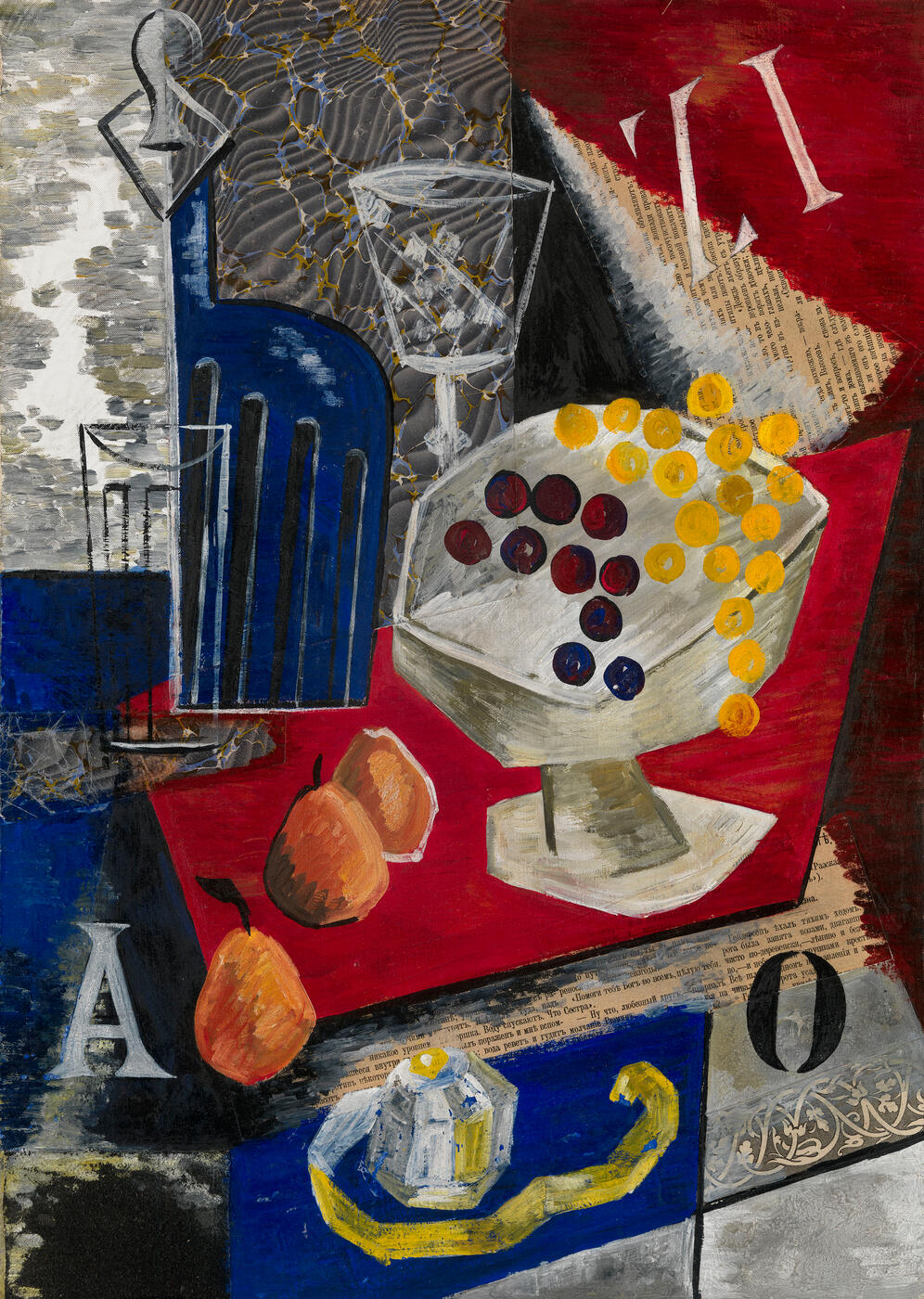MacDougall's Russian Art Auctions 27-30 May 2012
27 May 2012

§ 120. EXTER, ALEXANDRA (1882-1949)
Still Life .
Oil, tempera and collage on canvas, 50 by 36 cm.
200,000–300,000 GBP
Executed c. 1912.
Provenance: Important private collection, England.
Authenticity of the work has been confirmed by the expert G. Kovalenko.
Literature: “Bubnovyi valet” v russkom avangarde, St Petersburg, Palace Editions, 2004, p. 23, illustrated.
B. Livshits, The One and a Half-Eyed Archer, St Petersburg, Palace Editions, 2004, p. 42, illustrated.
1912–1914 were important years in the life of Alexandra Exter. It was a time when Cubo-Futurism was finding expression in her paintings as she maintained an ongoing artistic dialogue with Ardengo Soffici, the Italian painter who was a close friend of the artist. The effects of this are obvious, especially if one compares the still lifes of the two artists: they painted the same figural compositions with the same combination of objects (longstemmed wineglasses, bottles, tumblers, apples and pears, slices of watermelon, eggs). Both Exter and Soffici also introduced numbers, letters, inscriptions and collages into their still lifes.
A study of Exter’s compositions from this period, including the present lot, is most interesting: there are two tangible interactive factors – the Cubist approach to form and a Futurist energy which strives to transform the fabric of the still life. The result is an environment which is dynamic, brimming over and lively.
Exter’s Cubo-Futurist still lifes are emphatically material. Everything is endowed with meaning and significance: the colour and density of the bottle glass, the sparkling crystal of the wineglasses, the matt glaze of the bowls… Juxtaposing objects that are completely different in texture, Exter simultaneously seeks a way to bring them together, to unite them, to present each one as a manifestation of a single, inseparable fabric.
It is the techniques of Cubism which enable her to do this: a system of horizontal strokes, blending, interpenetration and skewed contours, and this gives rise to a fairly seamless fabric – fluid and pulsating, without being monotonous and uniform. There is always something going on, a shape seemingly trying to break free, desperately trying to assert its unique substantiality, then letting go and sinking back into the depths of the fabric. This motion is eternal in Exter’s still lifes. It is proof of the unstoppable movement of the fabric, its inherent dynamism. And finally: this still life is eloquent proof of Exter’s attempt to
achieve a Futurist position in a Cubist painting. Here we can clearly see the way the artist subjugates the constructive quality of Cubism to the dynamic world view of Futurism.
We are grateful to Professor G. Kovalenko for providing this catalogue note.
Notes on symbols:
* Indicates 5% Import Duty Charge applies.
Ω Indicates 20% Import Duty Charge applies.
§ Indicates Artist's Resale Right applies.
† Indicates Standard VAT scheme applies, and the rate of 20% VAT will be charged on both hammer price and premium.